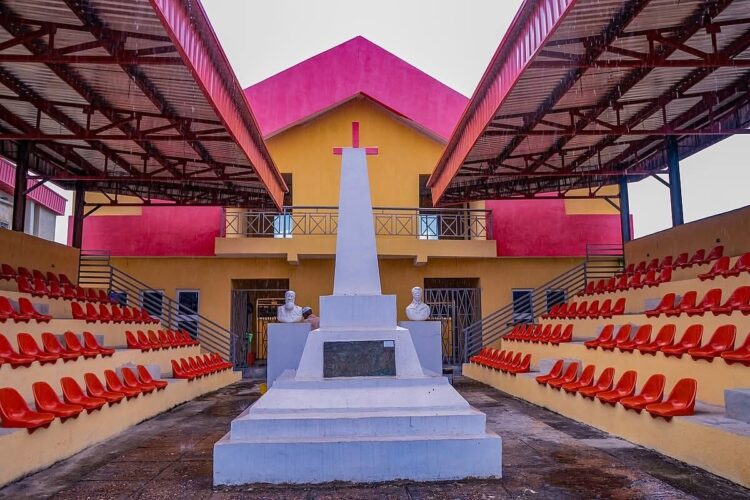Honouring the site where Nigeria’s first Christian sermon was preached in 1842
The Agia Tree Monument in Badagry, Lagos State, stands as a timeless symbol of faith and the beginning of Christianity in Nigeria. Located in the historic coastal town of Badagry, this monument marks the exact spot where the first Christian sermon was preached in the country on September 24, 1842.
The event was led by Reverend Thomas Birch Freeman, a Methodist missionary from the Gold Coast (now Ghana), and Reverend Henry Townsend, an Anglican missionary who would later become one of the founding figures of the Church Missionary Society’s work in Nigeria. Their sermon, delivered under the shade of a massive Agia tree, marked a defining moment in the nation’s spiritual history and the dawn of Christian evangelism in what was then a predominantly traditional religious landscape.
A Tree of Faith and History
The original Agia tree, estimated to be over 300 years old, was more than just a natural landmark. It became a symbol of enlightenment and the spread of Western education and religion in Nigeria. Under its vast branches, the first converts gathered, and it served as a meeting point for missionaries, traders, and locals during the 19th century.
However, in June 1959, nature took its course when a violent storm struck Badagry and felled the ancient tree. Its fall marked the end of an era but not the spirit it represented. To ensure its legacy endured, the local government and Christian communities later erected a granite obelisk monument on the site — a tall, elegant structure that now stands in remembrance of the tree and the historic sermon.
A Symbol of Christian Heritage
The Agia Tree Monument remains one of Nigeria’s most sacred Christian heritage sites. It attracts pilgrims and visitors from across the country and beyond, especially during anniversaries commemorating the arrival of Christianity. Each year, churches, historians, and faith-based organisations gather at the site to celebrate the pioneering efforts of early missionaries who laid the foundation for the Christian faith in Nigeria.
The monument also serves as a learning site for students of religious studies and history, illustrating how Badagry — once a major slave trade port — became a beacon of transformation through faith and education.
Badagry: From Slave Port to Spiritual Landmark
Badagry’s history is layered with stories of pain, resilience, and redemption. Once known for its role in the transatlantic slave trade, it later became the cradle of Western religion and education in Nigeria. The first primary school in Nigeria, St. Thomas Anglican Primary School, was established nearby in 1845, further cementing the town’s status as a centre of early missionary activity.
Today, the Agia Tree Monument stands not only as a Christian pilgrimage site but also as a powerful reminder of Nigeria’s complex journey — from colonial encounters and missionary work to spiritual awakening and nationhood.
A Living Legacy
Visitors to the monument often find the site both spiritually moving and historically enlightening. Surrounded by inscriptions detailing the events of 1842, the obelisk offers a glimpse into a moment that changed Nigeria’s cultural and religious trajectory. Local guides recount stories of how the early missionaries faced resistance, language barriers, and cultural obstacles yet remained steadfast in their mission.
The monument’s preservation underscores Badagry’s commitment to maintaining its historical identity amid modern development. Efforts by the Lagos State Government and religious institutions continue to ensure that the site remains accessible, educational, and spiritually significant for future generations.
The Agia Tree Monument is more than a historical site — it is a symbol of beginnings, faith, and transformation. From its roots in the sands of Badagry grew a movement that shaped the moral, educational, and religious foundation of modern Nigeria. As the obelisk stands tall in memory of that first sermon, it reminds visitors that faith, like the fallen Agia tree, may bend with time but never truly breaks.
Credit Source: National Commission for Museums and Monuments and Methodist Church Nigeria Archives
















